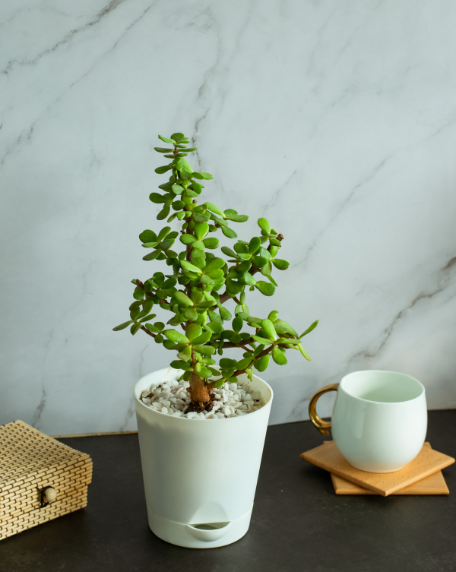
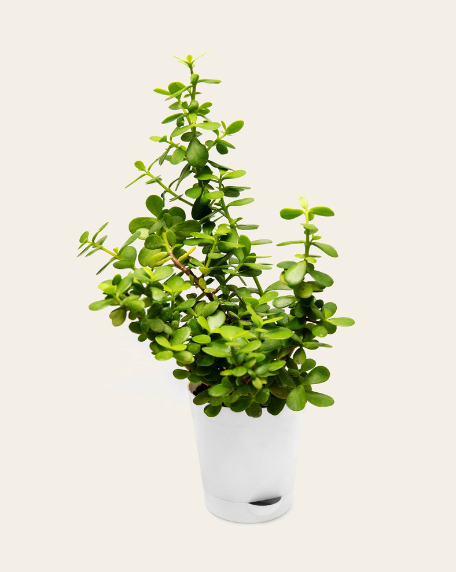
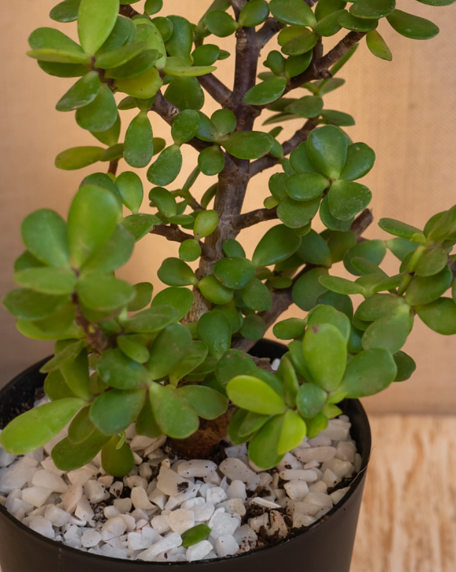
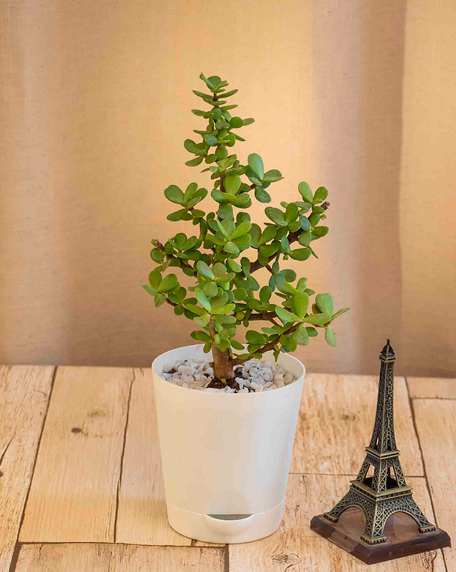
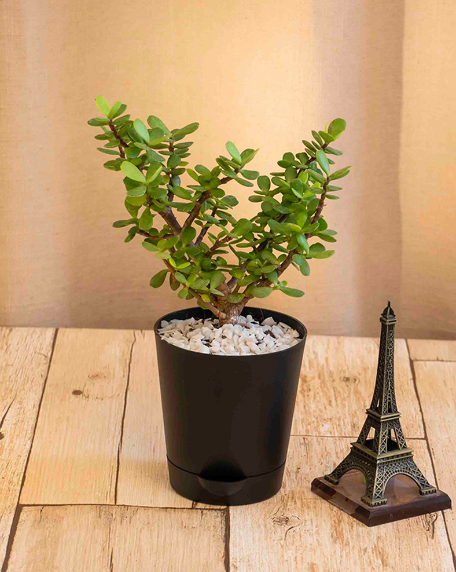
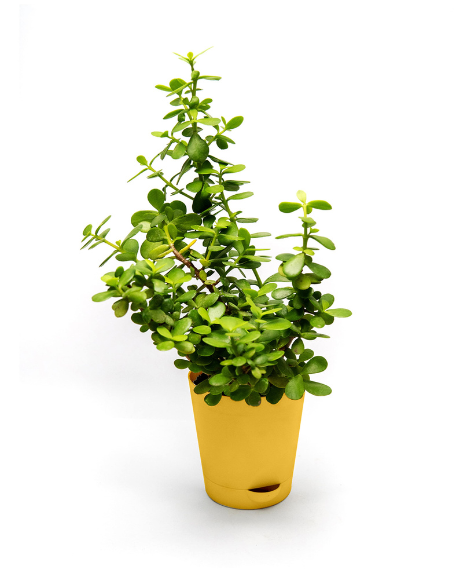
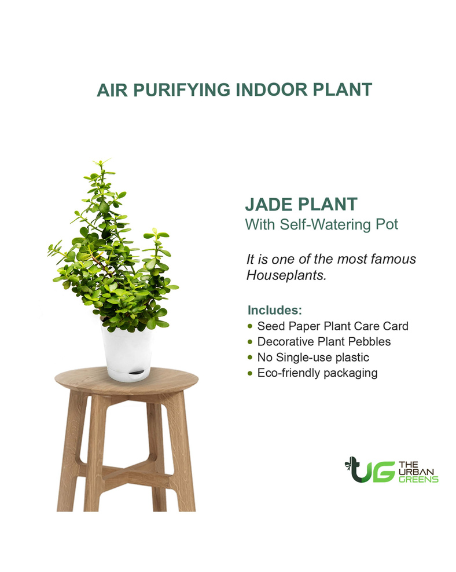
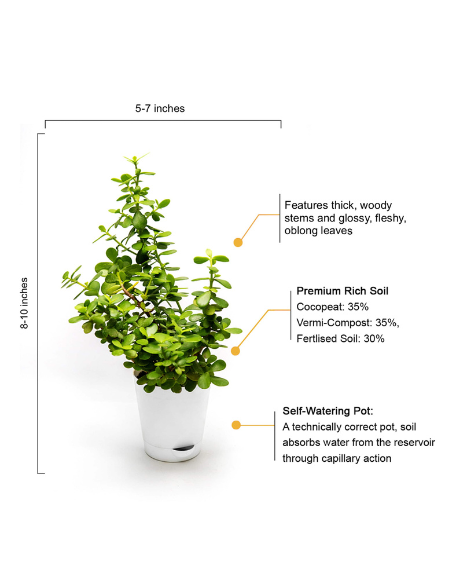
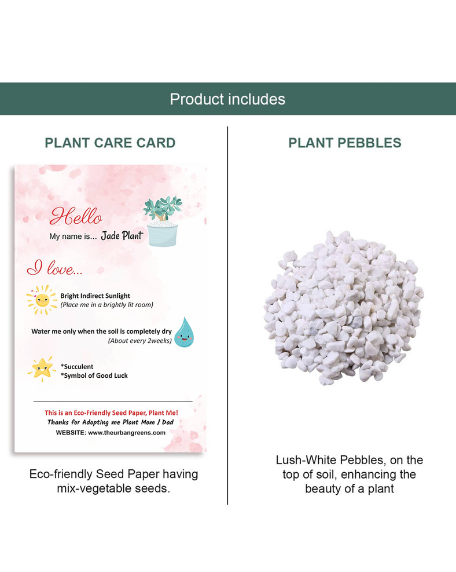
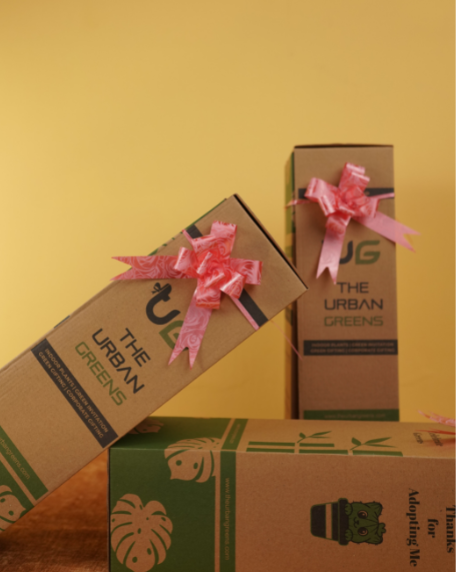
TRANSFORM YOUR SPACE
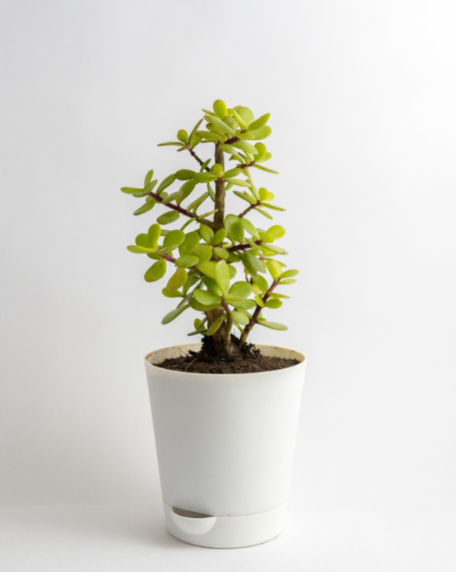
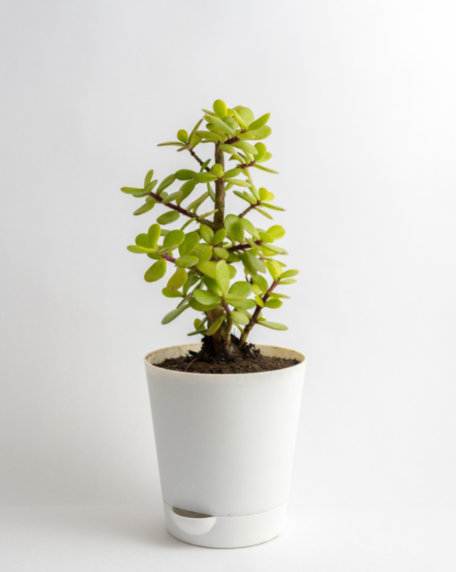
Common Problems
Q1. Why is my Jade plant experiencing loss of leaves?
Combined with underdeveloped leaves and leggy growth, this may be a sign of inadequate lighting. Move your plant to a place with better lighting. If necessary, supply it with artificial light.
Q2. Why is the Jade plant turning yellow?
The most common sign that the plant is turning yellow is due to overwatering. Being a succulent, leaves of Jade store water and so it does not need to be watered frequently. Despite solving the water problem if the plant continues to turn yellow make sure to check the roots and re-pot it.
Customer Reviews
At TUG, we firmly believe that we do not inherit the earth From our ancestors, but borrow it from our children.
Let’s pass it on cleaner, better, and greener.
OUR USP’s

Healthy, top quality
indoor plants

State-of-the-art
nurseries

Plant expert for
guidance

Maintenance free self- watering, ergonomic pot

Eco-friendly,
recyclable packaging















